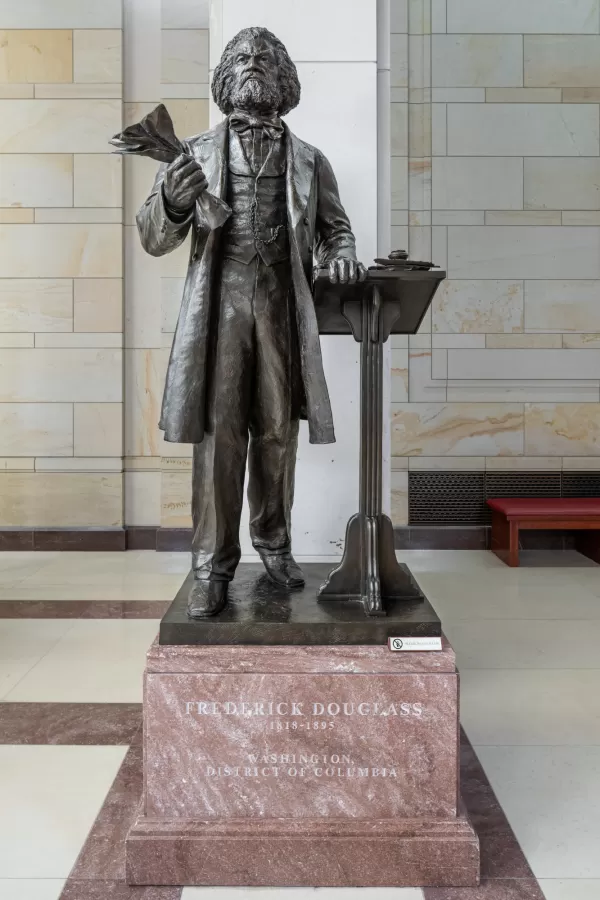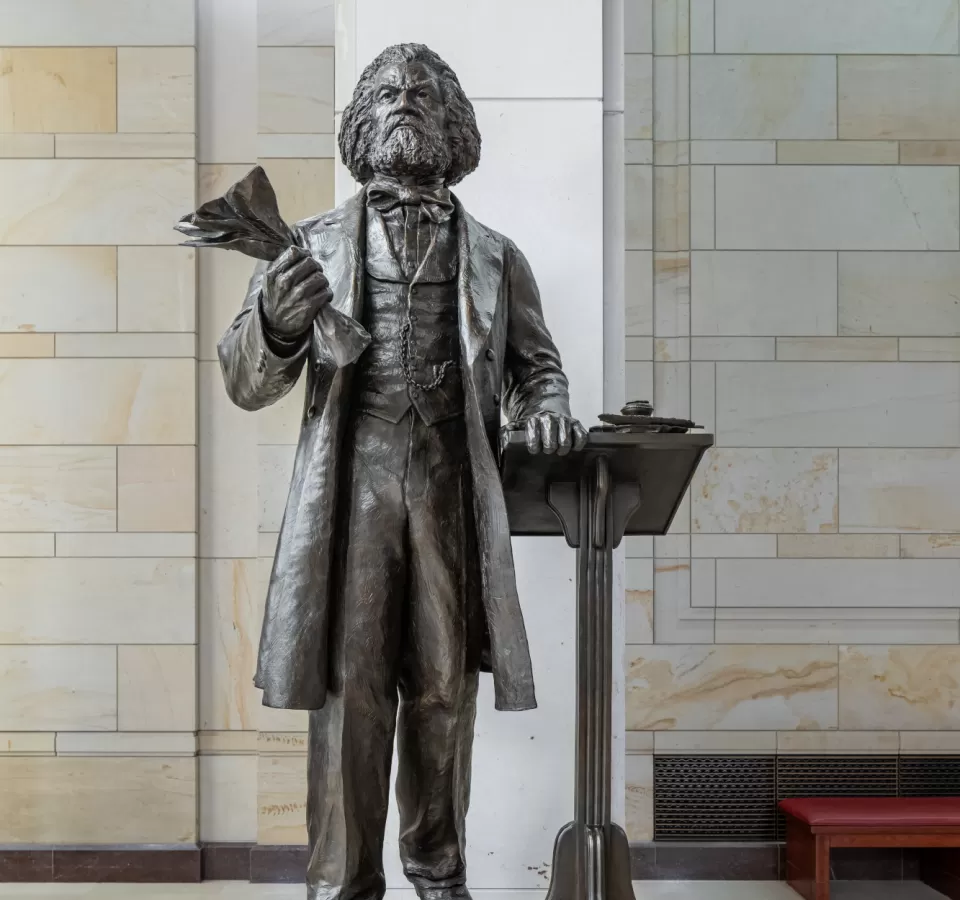Highlights
In 2006, Steven Weitzman was awarded the commission to create this statue of Frederick Douglass by the Washington, D.C., Commission for the Arts and Humanities. Citizens of the District of Columbia had chosen the subject of the statue through a voting process. In 2012, the Congress passed and the president signed P.L. 112-174, which directed the statue's placement in the U.S. Capitol Visitor Center's Emancipation Hall.
The statue, which is approximately seven feet tall, depicts Douglass as a man in his fifties in the act of giving a speech with a determined expression. He stands beside a lectern, leaning slightly forward and holding up a crushed sheaf of papers. His left hand firmly grasps the top of the lectern, where an inkwell and a quill pen sit in reference to his work as an author. He is dressed in a formal double-breasted frock coat, bow tie, and vest with a watch chain.
The statue's pedestal is two and one-half feet high, and is clad in pink marble, with the following inscriptions.
Front:
FREDERICK DOUGLASS
1818-1895
WASHINGTON,
DISTRICT OF COLUMBIA
Proper Right:
The soul that is within me
no man can degrade.
—Quoted by Booker T. Washington
in Up from Slavery, 1901
Proper Left:
If there is no struggle
there is no progress.
—Address on West India
emancipation, 1857
This statue is not a part of the National Statuary Hall Collection. The Joint Committee on the Library approved the statue's acceptance into the joint art collection of the Capitol; the Congress approved its unveiling on June 19, 2013, a date also known as Juneteenth that commemorates the arrival in Galveston, Texas, of Union troops who brought the news that the Emancipation Proclamation had abolished slavery in the states then in rebellion.

